May 2021
As venues plan their reopening, capacity management is a key component for compliance and the health, safety, and peace of mind of your guests and staff. Theme parks and venues will need to put strict procedures in place to manage attendance and occupancy levels into and throughout their parks to adhere to capacity guidelines.
Transitioning to a Capacity Managed Attraction
The more confidence you instill in your guests with effective health and safety measures, the more likely you will be to draw visitors and get them to recommend friends and family, and to repeat visits. Now more than ever, it’s essential to use identification solutions and technology to manage guest capacity. A highly valuable and beneficial approach is to adopt the use of wristbands to help you effectively monitor guest and staff capacity and flow throughout your venue. Below we offer 6 tips for tackling capacity management at your attraction.
Attendance Tracking Made Simpler with Coloured Wristbands
Capacity management will be the new normal for quite some time once parks and venues reopen their doors to the public. Controlling and managing guest attendance will no longer just be for special events anymore, but for your entire attraction. Adding wristbands as part of your reopening strategy will help your venue manage things like capping daily admissions, enforcing time slots for admission, particular areas, or groups.
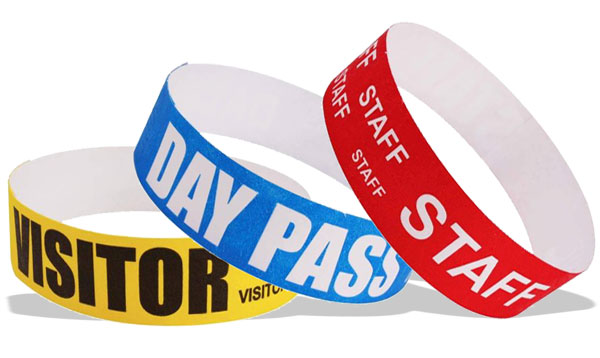
|
1. Track & Adhere to Limited Attraction Capacity Many attractions opening are limiting attendance to 25% - 50% of park capacity to maintain social distancing guidelines. Consider utilizing wristbands to keep track of the number of guests allowed in your venue at a given time. For example, brightly-colored wristbands give you the opportunity to identify and color-code each guest or group that enters your doors to make sure guests and staff adhere to the mandatory cap. |
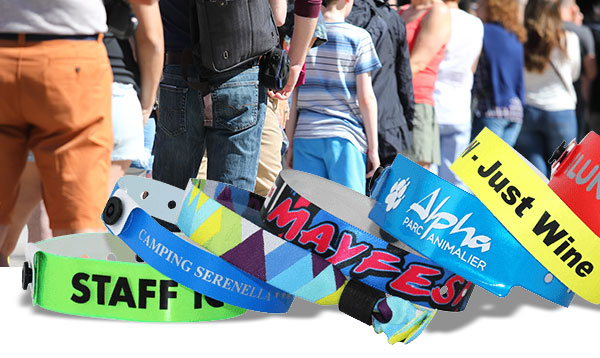
|
2. Identify and Categorize Limited-Time Attractions Venues like theme parks, water parks, museums, and family entertainment centers are instituting not only daily capacity limits, but are introducing split attendance times as well. For instance, if your guests follow a pattern of arriving in the morning and leaving in the evening, you may want to split your day into morning and afternoon admissions. Some smaller venues may limit dwell time to a couple hours to better manage and track flow. Wristbands can play a key role in assisting with these new attendance procedures during these unprecedented times. Brightly-colored wristbands are the ideal visual identifier for staff. Issue a certain color wristband for each different time slot. Blue wristbands may categorize guests that arrive in the morning, and yellow may indicate afternoon hours. |
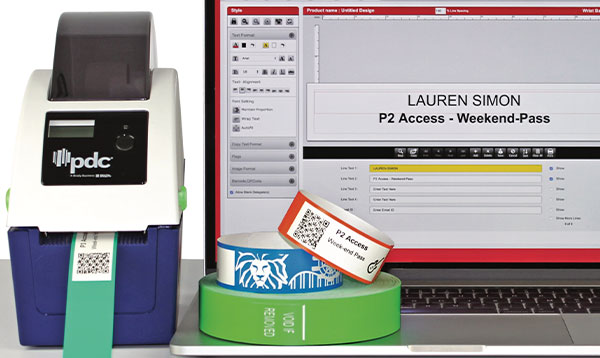
|
3. Custom Print Wristbands On-Demand and On-Site Another beneficial solution is to customize print-on-demand wristbands on-site at your venue. Designed to be used with a compatible direct thermal printer, you can print the exact number of wristbands you want when you need them. Offered in a variety of bright colors, consider implementing a color-coding system where you can easily interchange wristbands depending on the day, hour, group, or access area. Since you are able to print on-demand, colors can be changed as often as needed and staff can easily see which guests should be in the park or in a certain area at a given time. |

|
4. Capture Guest Capacity with Barcodes Print unique barcodes, QR codes, and text, (like arrival time, access type, or group name); onto each wristband to better manage guest capacity. Barcoding allows your attraction the opportunity to not only capture the number of guests in your venue and set a cap, but it can also be used to connect guests’ wristbands to your point of sale system to keep track of occupancy levels. |
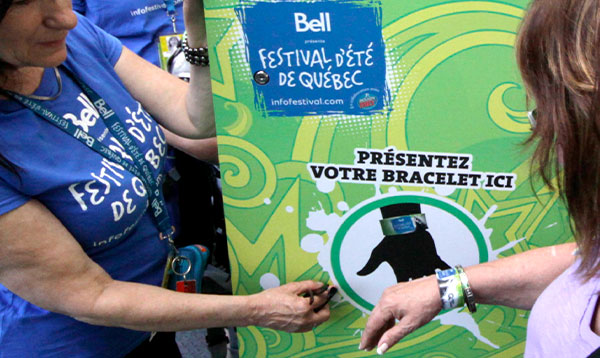
|
5. Enhance Guest Experience with RFID Applications RFID wristbands offer also have the ability to manage guest capacity. RFID wristband dispensing kiosks allow you to reduce direct contact with your staff and track how many wristbands are dispensed. RFID checkpoints can even be installed to track attendance and the flow of foot traffic going into different locations. And RFID wristbands enable cashless point-of-sale throughout your venue, further reducing direct contact and providing guest convenience for all of their food and merchandise purchases. |
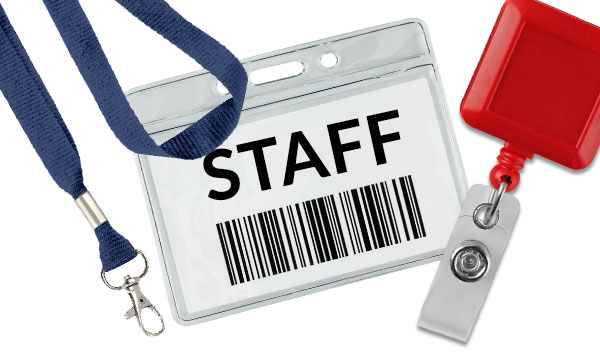
|
6. Assist with Staff Rotation and Timed Shifts Since parks will be operating with limited attendance, the number of employees may also be reduced. Wristbands, and/or customized ID holders, lanyards, or badges can also assist with staff rotation based on staggered or timed shifts, or groups. These identification solutions can also be customized with important safety and health information to enhance guest’s peace of mind and promote healthy reminders for all. |
It happens to the best of us: we forget things. It’s human nature.
Keys get misplaced. TV remotes disappear. The name of that song you wanted to look up slips your mind. It’s frustrating: “It’s right on the tip of my tongue… I was just thinking about it a few minute ago!”
Strangely, forgotten items often include things that we use on a regular basis. You’d thing those everyday items would be easier to remember, but the brain works in mysterious ways. Cell phone chargers. Car Keys. Glasses. These are items that are essential to daily life, yet they often disappear.
Another item that often gets left behind? Employee ID badges.
Employee badges are going to vary from place to place. How they look and how they're used is going to depend on an organization's preferences. Some organizations might require employees to have their badges at all times, while others might not care as much.
Exactly like the other daily object, ID badges will sometimes be forgotten. This raises an important question: what should you do when an employee forgets his or her credential?
How you respond to a forgotten ID badge is going to depend on how secure you want your facility to be.
If a facility is a small office where all of the employees know each other and sensitive information isn't being shared, a forgotten ID badge isn't a huge deal.
If a facility a high-security or a massive complex with thousands of workers or sheltering high-value goods, being able to positively identify an employee is essential.
Deciding how seriously you want to take ID security will go a long way toward determining how to handle forgotten credentials.
Give out temporary badges
You can achieve this in a variety of ways. You could treat the employee as you'd treat any other visitor, using your Visitor Management solution to register the employee's presence and issue a paper/ID badge.
You could also create generic employee badges that your receptionist or human resources manager keeps at his or her desk. Forgetful employees could sign in to receive a badge at the beginning of the day, then return it at the day's end.
The sign-in/sign-out process would ensure that badges don't go missing, and would also serve as a way to encourage employees to be less forgetful in the future. After all, no one likes extra paperwork.
Pros: Employee is still registered in the system, no work time is lost
Cons: Mixes employees in with your visitor records, potentially creates more work for front desk staff
If your company is looking for some fun, you can have a laugh by poking a little fun at that employee.
One of our customers uses a special badge that looks and acts like a normal ID badge but says "I FORGOT MY BADGE AT HOME" in large letters. If your employees have a good sense of humor, this is a good way to lighten the mood while still allowing the employee to go about his or her day.
Zero-tolerance in some cases?
It may seem harsh, but for high-security operations, adopting a zero-tolerance for forgotten badges can ensures that you don’t allow anyone on site without authorization. This policy eliminates concerns about deceptive people posing as employees who forgot their badges. It also sends a message to employees and other personnel that the organization takes security seriously, which could have positive effects on other areas of the business.
Also, if an employee forgets his or her badge and is forced to go home and retrieve it, the chances of that employee forgetting it again would almost certainly decrease.
Adding employee ID badges to your facility is a great way to increase security and professionalism without busting the budget.
We have decades of experience creating badges of all kinds, and would love to help you get your employee ID program started, whether you want to print your own ID badges on site or want us to custom print them for you.













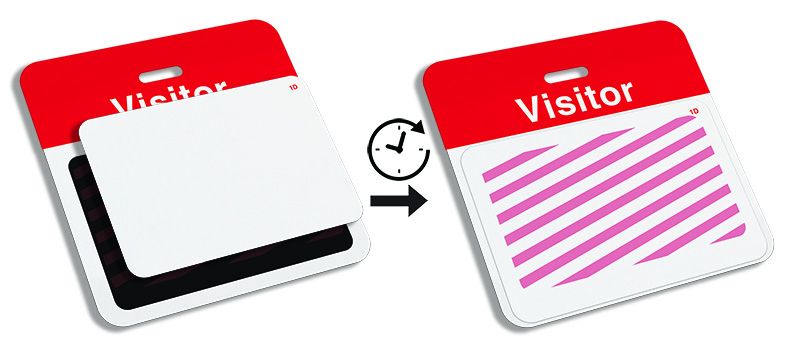
 Customer satisfaction
Customer satisfaction
 Free delivery
Free delivery
 Secure payment
Secure payment
 24 hour delivery
24 hour delivery
 Customer service
Customer service





